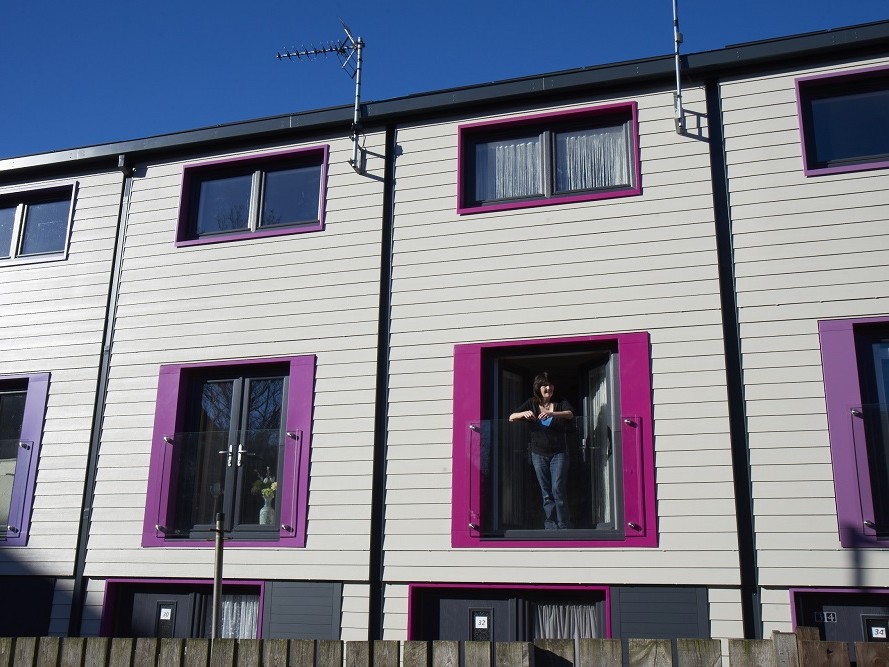New Procurement Mindset Emerges as an Inner-city Neighbourhood Gets Energy Efficiency Makeover
Nottingham's Sneinton district looked like many others throughout the UK: houses designed and built in the 1960s, still looking much the same today as when they were built, albeit older and shabbier. The residents struggled with hefty fuel bills due to badly insulated façades and roofs. Over the last fifty years, loose fittings would be patched up and roofing panels replaced – piecemeal improvements, but never a comprehensive makeover. More needed to be done than provide external wall insulation if the city council was to aim for near-zero emissions standards for this ageing housing stock. Pioneering Pilot Scheme The landlord, Nottingham City Homes (NCH), therefore decided to launch a pilot scheme to see how houses could be retrofitted to meet 2050 zero-carbon standards in a way that would be affordable for NCH and tenants alike. These standards are part of the UK's Climate Change Act aimed at reducing carbon emissions by 80% by the year 2050 compared to 1990 levels. The scheme's aim was to drastically improve the homes' energy performance as well as enhancing the look and feel of the neighbourhood. This pilot scheme was undertaken as part of an EU-funded project – REMOURBAN – which has been trialling interventions in the housing and transport sectors on a European level. Today, the retrofitting has been completed and tenants are now feeling the benefits. They now have a flat-rate cost for energy. The homes not only look smarter, they are smarter. The pilot scheme revamped ten homes in Sneinton. The retrofitting involved a comprehensive makeover with new outside walls and windows, a solar roof and a smart heating system. The technology installed allows tenants to use energy in the most cost-effective way and draws on on-site energy sources. The interventions featured enhanced external lighting, skylights and wider windows to improve overall comfort and foster a greater sense of community. It took just two weeks to complete the upgrades, thus causing minimal inconvenience to tenants. The scheme draws on the recent Energiesprong model which brings existing housing stock up to 2050 energy standards. Originally from the Netherlands, it was the first time this model has been used in the UK. Now it is set to be rolled out in other districts in Nottingham and in other towns such as Derby. Procurement Game Changer The model uses an innovative, whole-life approach to finance; the cost of the works is designed to be equal to the expected savings in maintenance and energy over a 30-year period. It is outcome-based, offering guarantees for both landlord and tenant. And for the Sneinton pilot, this meant a shift in mindset by all those involved. Generally, when a local council issues a tender, it is seeking the lowest upfront cost. According to Emily Braham, Head of Sustainable Energy at Nottingham City Homes, this can reward lower quality and puts the contractor against the client – council – right from the start. Specifications are set from the start and bidders try to match them by competing on cost. With the Sneinton retrofit scheme, things were turned on their head; both council and contractor found themselves embarking on a steep learning curve where contractual specifications came at the end of the iterative dialogue process rather than at the beginning. Read more: www.remourban.eu/news--events/press-releases/new-procurement-mindset-emerges-as-an-inner-city-neighbourhood-gets-energy-efficiency-makeover.kl
Keywords
retrofitting, renovation, energy efficiency, fuel poverty, heating
Countries
United Kingdom



